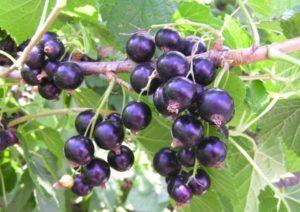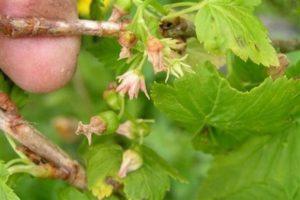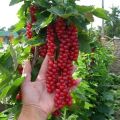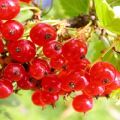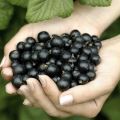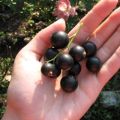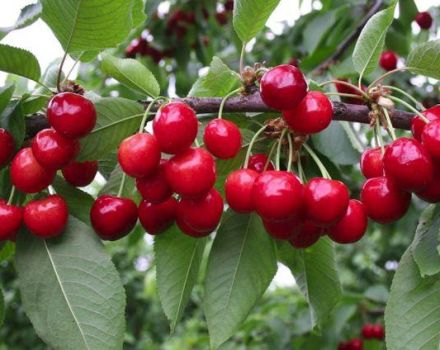Description of varieties of blood red currants, planting and care rules
Although berry bushes are generally considered fruitful plants, there are varieties, such as ornamental currants, that are effectively used in landscaping and other similar purposes. This variety does not require special growing conditions and pleases with beautiful flowers that have a blood-red color. Despite the fact that the berries of this shrub are not eaten, it is widely popular.
Botanical features of ornamental currant
This currant grows up to two or three meters. In the wild, specimens are observed, the height of which reaches four meters. When such bushes grow in the northern regions, due to the harsh climatic conditions, they are able to reach a height of no more than one meter.
Foliage can have various shades of green: from pale green, light green or yellow to dark shades.
The fruits are black with a light bluish bloom. The size of the berries does not exceed 1 centimeter. Fruiting does not begin immediately - the berries can be obtained starting from the fifth year of the plant's life. The fruits begin to set in August. The berries of this variety of currants do not stand out in anything special - their taste is inexpressive, they are not used for food.
Forms and varieties of blood red currants
This plant is known for decorative forms with improved characteristics:
- The first form is called dark red. Its distinctive feature is its deep red flowers with a ruby tint. This shrub (Atrorubens) is relatively small in size - the height usually ranges from one to one and a half meters.
- The Brondebank currant is known for having yellow flowers and golden leaves (Brocklebankii).
- The Splendens form is distinguished by its large flowers with a bright red hue.
- The Carneum form is characterized by larger, pale pink flowers. The height of the bush does not exceed 1 meter.
- A form with whitish flowers (Albescens) was bred.
- Terry variety Flore-plena has luxurious dense inflorescences.
- There are varieties related to the variegat type. A distinctive feature is the presence of cream spots and spotted colors.
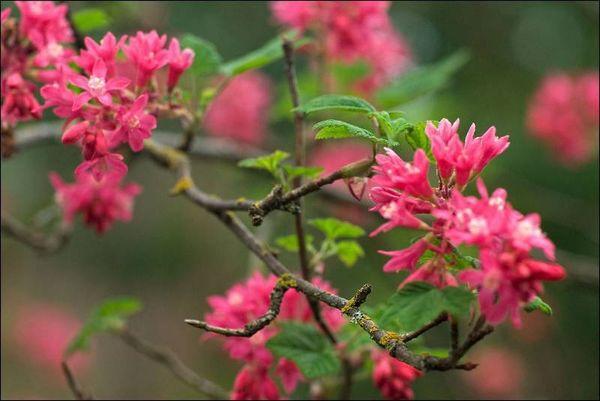
The most famous varieties of blood red currants:
- King Edward VII has a rich wine color. They are combined into massive elongated brushes. In this case, the crown of such currant bushes is loose. This variety is considered one of the best.
- Pulborough Scarlet has a pink-red color that blends beautifully with emerald currant leaves, which have a slight bluish tint.
- White Icicle flowers are snow-white. The bushes are seen as if enveloped in a white cloud. The flowers are combined into large, dense inflorescences.
- Tydeman's White grows up to two meters in height. It combines a creamy white color with a very bright leaf color.
- Among the rose-flowered blood-red currant bushes, Strybing Pink is considered one of the most impressive.
I should mention the successful hybrids:
- Obtained by grafting on golden currants.
- If we take fragrant currants as a basis, and graft alternately golden and blood-red varieties on different branches.
- Mention may be made of the Gordon currant, which combines a charming appearance with an extremely strong winter hardiness. During the winter, the plant does not need to use additional insulation measures.
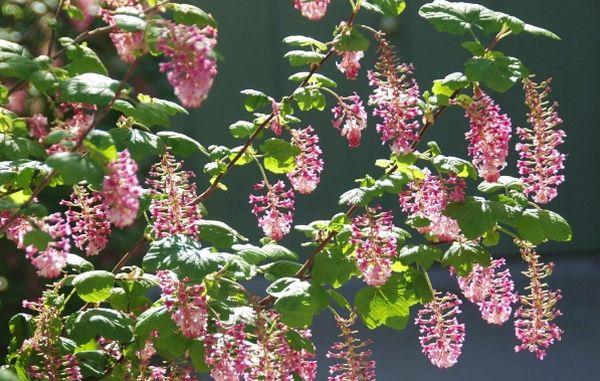
Description
The blood red currant is the largest in comparison with other varieties.
The growing season lasts almost throughout the year. In every season, she is able to delight the owners. In spring and summer, currant flowering is striking. Even in winter, it stands out in the garden with its picturesque crown.
The growing season begins in mid-April and lasts until the onset of winter cold.
What a bush looks like
The diameter of the crown corresponds approximately to the height of the bush. Shoots are straight and strong-looking. The bark on them has a beautiful reddish tint. The foliage is medium to large, typically 2 to 8 centimeters in size.
The leaves of the shrub have a palmate-lobed structure, and in the central part they are larger than the lateral ones. The upper part of the leaf is shiny, at the bottom there is a sparse edge.
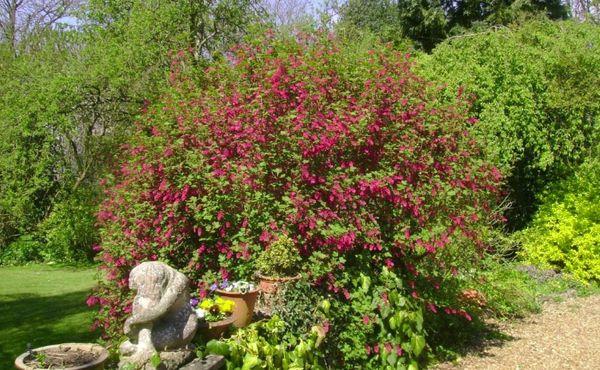
Flowering characteristic of a non-standard shrub
The blood red currant is famous for its flowers. On the branches, they are collected in brushes, and each contains 5 petals. Their color ranges from pale pink to blood red.
Benefits of using in garden design
This currant can be used for decorative purposes. Here are application examples:
- Can be grown as a centerpiece when decorating lawns.
- Suitable for use in spring flower beds as a taller plant, for combination with other species.
- Effective when used in landscape groups, including other shrubs and trees.
- Suitable as decoration for the front garden.
- Used as part of a hedge, as one of the unusual plants.
Where is it recommended to grow
This currant does not require special growing conditions. However, she will delight you with beautiful flowers in those cases when comfortable conditions are created for her. It is recommended to grow blood red currants in areas with good lighting.
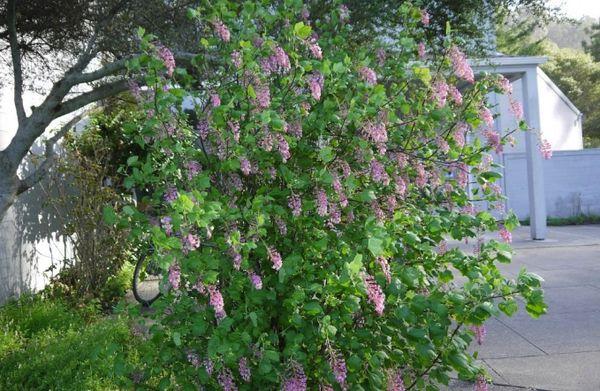
Conditions required for ornamental currants
It should be borne in mind that the plant needs high-quality soil - fertile, loose and moist. The shrub will thrive on neutral or slightly acidic soil, but heavy clay or moist soil will not work.
Landing technology
Before planting currants in the ground, you need to improve the soil in advance - feed it with full mineral or organic fertilizers. The shrub is planted in early spring or autumn. It will require a large pit. It is necessary that its size is twice or three times the size of the root. The seedlings are buried in the ground with a depth of 5-10 centimeters. Immediately after planting, mulching should be carried out and the plant should be watered several times.
Blood red currant care
This variety is known for its undemanding care. The plant will need regular weeding and loosening of the soil. This is done once or twice a year. If you maintain a mulching layer of soil, then this can be omitted.
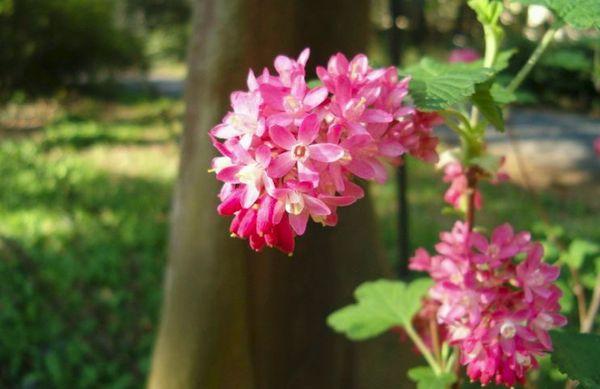
What watering does the culture require?
It is necessary to monitor the maintenance of soil moisture. In dry times, watering the currants is required to support the plant. It is especially important to do this during the active growing season.
What to feed for long and bright flowering
Blood redcurrant bushes do not need fertilizer for several years after planting. Every year, once a season, feeding is carried out, with the exception of the first two years. This procedure takes place in early spring. This requires the introduction of mineral fertilizers or the introduction of organic matter.
Pest and disease control
Currants are not susceptible to attack by insect pests or diseases, provided that they are properly cared for. Such problems arise only in highly neglected bushes.
Schemes and technology of forming a bush
Pruning of branches begins in the third year, and is done at intervals of once every three years. With this procedure, old and non-viable branches are removed, as well as those that create a thickening of the crown.
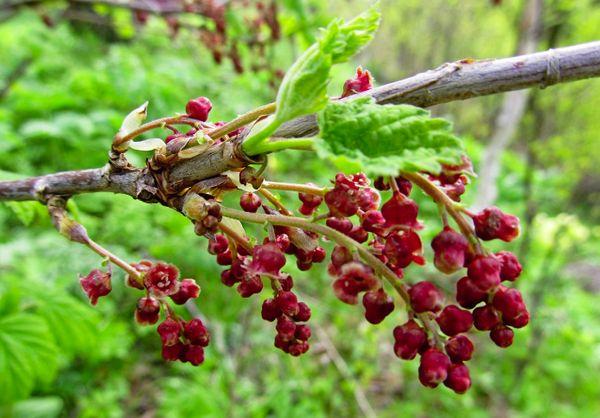
If you shorten young shoots by a third, this will further lead to their intensive growth. Pruning is done at the end of March or the first half of April, removing all the weakest branches.
Wintering
The main difficulty in growing blood red currants is that in order for them to endure the winter well, special care is needed. If this is not done, then in areas with a temperate or cold climate, the part above the ground will freeze out.
To leave you need:
- When the leaves fall, the ground around the plant is cleared, and the base of the shrub is spud.
- The shoots are tilted to the ground and covered with dry leaves.
- In the snowy winter, they try to cover the currants with snow.
- You can use spruce branches to cover the shrub.
- To care for the plant in winter, it is wrapped in non-woven fabric.
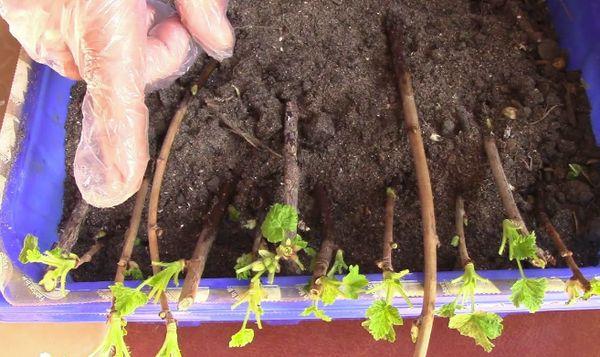
Breeding methods
For this, the following methods are used:
- For propagation by cuttings, twigs 25 centimeters long are cut. They are rooted using a damp substrate, warm. To create suitable conditions, this is done under a transparent cover.
- To obtain cuttings, suitable branches in the middle are sprinkled with earth, then they must be watered intensively until roots are formed. After that, the branches are cut off and planted in a suitable place.
- You can use seeds. The bush will begin to give them from the third year of its existence. They are sown in boxes or pots and germinated. After that, they can be planted in the ground.
Reviews of gardeners about the variety
Nikolay
“The currant pleases with its appearance. Began to grow. It blooms beautifully, but does not grow more than one and a half meters. Probably because of the cold climate. "
Tatyana
“A beautiful bush. Previously, I saw only from neighbors, then began to grow at home. The currant did not disappoint expectations - it pleases me with luxurious flowers. "
